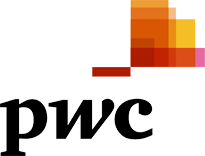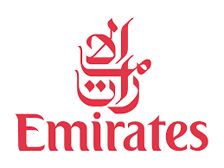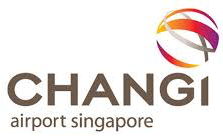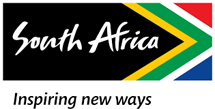Report: The Future of Healthcare
Sector: Healthcare
Publication Date: 2020
Mr Keller Rinaudo, CEO of Zipline
Zipline, a drone operator specialising in the delivery of medical supplies, has ambitious plans to expand across Africa, Asia and the Americas and position the company to serve 700 million people in the next five years, says Keller Rinaudo, CEO and Co-Founder of Zipline.
Could you please start by introducing Zipline International and the initial inspiration & rationale behind founding a healthcare logistics company deploying drone technology with a clear focus on Africa?
Back in 2014, I visited ‘The Ifakara Health Institute’ in Tanzania, where I met with a grad student who had built a mobile alert system for health workers to text emergency requests for medicine and vaccines. Thanks to this system, health workers made thousands of emergency requests, which had not been possible before. Unfortunately, there was no way for the government to fulfil these requests. That’s when I realised that Zipline could be the other half of that system.
More than 2 billion people across the world cannot access the medicine they need to survive because of last mile transportation challenges. We built Zipline, the world’s first and only national-scale instant drone delivery service, to solve that problem. Zipline makes on-demand instant deliveries of life-saving medicine to people in need within minutes. Over the next several years, we’ll be serving up to 140 million people in countries across Africa, India and very soon the United States. Our goal is to expand to serve 700 million people over the next five years.
Please describe the actual process by which you are managing to deliver critical medical supplies such as blood, rabies vaccines and anti-venom, to thousands of hard-to-reach health clinics across Rwanda and Ghana.
Until now, the only way to ensure all patients have universal access to the medicines they need to stay healthy and alive was for health facilities to keep large inventories of these products all the time. This is an incredibly costly approach that results in high levels of medical waste, high storage costs and high emergency inter-facility transportation costs when either patients or medical products have to be moved from one place to another. This is especially true for products like blood, vaccines, cancer therapies, insulins, and other injectables. All too often, people requiring lifesaving care do not get the medicine they need when they need it.
Our medical drone delivery system is designed to eliminate this problem. In fact, our just-in-time, instant drone delivery service cuts delivery times down from hours or days to just minutes. And it enables hospitals to increase patient access to medicines while decreasing or eliminating medical waste all together. To increase access and reduce medical waste, key stock of blood products, vaccines and life-saving medications will be stored at Zipline’s distribution centres for just-in-time delivery.
Health workers will place orders by text message or call and promptly receive their deliveries in 30 minutes on average. The drones both take off from and land at Zipline’s distribution centres, requiring no additional infrastructure or manpower at the clinics they serve. The drones fly autonomously and can carry 1.8 kilos of cargo, cruising at 110 kilometres an hour, and have a round trip range of 160 kilometres — even in high-speed winds and rain. Each distribution centre covers a delivery area of more than 20,000 km2/almost 8,000m2 and is capable of serving up to 10 million people. Deliveries are made from the sky, with the drone descending to a safe height above the ground and releasing a box of medicine by parachute to a designated spot at the health centres it serves.
We understand that the design of your fixed-wing, electric UAVs, the “Zips,” is rather different from the quad copters typically being used by most drone outfits in the life sciences niche. Why is this?
Quadcopters can only fly a few miles or so at a time and only in close to perfect weather conditions. We custom built our aircraft and logistics system to operate at national-scale, 24 hours a day, rain or shine.
How has your technology evolved over time? What adaptations and improvements have you made to date?
In 2018, we completely redesigned our aircraft and logistics system to dramatically improve the launch, autonomous flight and landing capabilities. The improvements decreased the amount of time between Zipline’s receipt of an order and launch of a fulfilment flight from 10 minutes to 1, increased the number of daily delivery flights that each Zipline distribution centre can make from 50 to 500, and expanded the radius of each distribution centre to serve populations of up to 10 million people.
Zipline’s new delivery vehicle is an autonomous fixed-wing style airplane. The plane is capable of flying at a top speed of 128 km/h, and a cruising speed of 101 km/h—21 km/h faster than the previous generation of aircraft—with a round trip range of 160 kilometres carrying up to 1.75 kilos of cargo. The new plane is capable of flying four times faster than the average quadcopter drone and can serve an area 200 times as large.
Why was the decision taken to commence operations with countries like Rwanda?
Rwanda raised its hand first and was ready to innovate and move fast. They’ve now shown a pathway forward that countries around the world, including the United States, are beginning to follow.
Rwanda became the first country in the world to develop and implement universal performance-based regulations for drones. Rwanda’s regulatory efforts are considered so innovative that they’ve become a model for countries around the world.
Through a partnership with the World Economic Forum’s Centre for the Fourth Industrial Revolution, Rwanda helped to develop the Advanced Drone Operators Toolkit. At the time of its announcement in January of 2019, the World Economic Forum said that “several governments in Asia are expected to announce they will be using the ADOT to develop regulations that will enable their own drone delivery programmes.”
To the best of our knowledge, Zipline is the only company operating at a national scale and fully integrated with national healthcare systems. With specific reference to your projects in Rwanda and Ghana, tell us about the style of partnerships that you have managed to establish with the authorities.
Correct. Zipline is the world’s first, and still only, national-scale autonomous drone delivery service. It took Zipline almost two years to scale to reliably serve 21 health facilities in Rwanda day-in and day-out with on-demand and emergency delivery of blood products. And it took 9 months to make 1,000 total deliveries.
With the knowledge and experience gained in Rwanda, working hand-in-hand with the country’s Ministry of Health and its Civil Aviation Authority, Zipline was able to achieve similar milestones in Ghana within months of launching our service. Now, we make 1,000 deliveries every 20 days on average. The company has made over 20,000 deliveries to date. About a third of those deliveries have been in emergencies where a patient’s life was on the line.
Zipline has gone from a single distribution centre in one country serving 21 health facilities to six distribution centres in two countries by the end of this year. Those six distribution centres will be delivering to over 2,000 health facilities serving a population of close to 22 million people next year.
Zipline will also be expanding to India as part of a Government initiative to put almost all of Maharashtra State’s 120 million citizens within range of instant medical delivery by drone.
We noticed that Zipline, this year, has started to test out a service in North Carolina. Does this suggest that there is scope to start applying your services not just to the developing world, but mature, advanced Western markets as well (where there still might be logistical difficulties in connecting with critical-access hospitals)?
We’re working to bring our service to every corner of the world. There are medical access problems in the developed world that we can help address. Many health facilities don’t stock all the medications they might need to serve patients and instead transfer patients to larger facilities. This approach is more expensive, and those costs are usually born by the patient. We can help address that. There’s also a larger movement afoot in the United States to decentralise healthcare. Right now, the hospital is the first stop for many patients seeking care. But studies show that home centred care can not only help contain costs, but also improve patient outcomes. On-demand access to instantly delivery of medicine will play a big role.
Courtesy of a new cash injection of $190 million worth of fundraising in May Zipline achieved unicorn status: a valuation of over $1 billion. How easy has it been to fundraise? And where will you be allocating this new resource?
There is a growing feeling around the world that technology is not benefitting the vast majority of people. The old conventional wisdom has been that building a successful technology company requires exploiting people’s personal information or hijacking their attention. Zipline wants to establish a new model for success in Silicon Valley by showing the world that the right technology company with the right mission and the best team can help improve the lives of every person on the planet. The new funds will support the global expansion of Zipline’s lifesaving service across Africa, South Asia, Southeast Asia and the Americas and position the company to serve 700 million people in the next five years.

 Related Content
Related Content
Putting our House in Order
The development of global standards for the investment migration industry needs to be an urgent priority for the sector. Long-term success will only be brought about if international institutions and civil society have confidence in the industry, writes Bruno L’ecuyer, Chief Executive of the Investment Migration Council.
The Big Picture Idea: Nation as a Service
Estonia’s e-Residency Programme is partly the brainchild of Kaspar Korjus, the former Head of the Programme. He talks about the programme’s start-up phase, major achievements and its future potential. He says that as more countries build digital services of their own, the idea of nation-as-a-service comes into sharper focus.
Expatland: The World’s Most Influential Country
Expats may account for just 3% of the world’s population, but they are changing the world and reshaping societies — and their dominance is growing as expats are expected to account for a larger share of the world’s population in the decades ahead, says John Marcarian.
The Real Face of Panama
Logistics, tourism and real estate are set to drive Panama forward as the country is confident that its best days are yet to come.
Report Sponsors




























